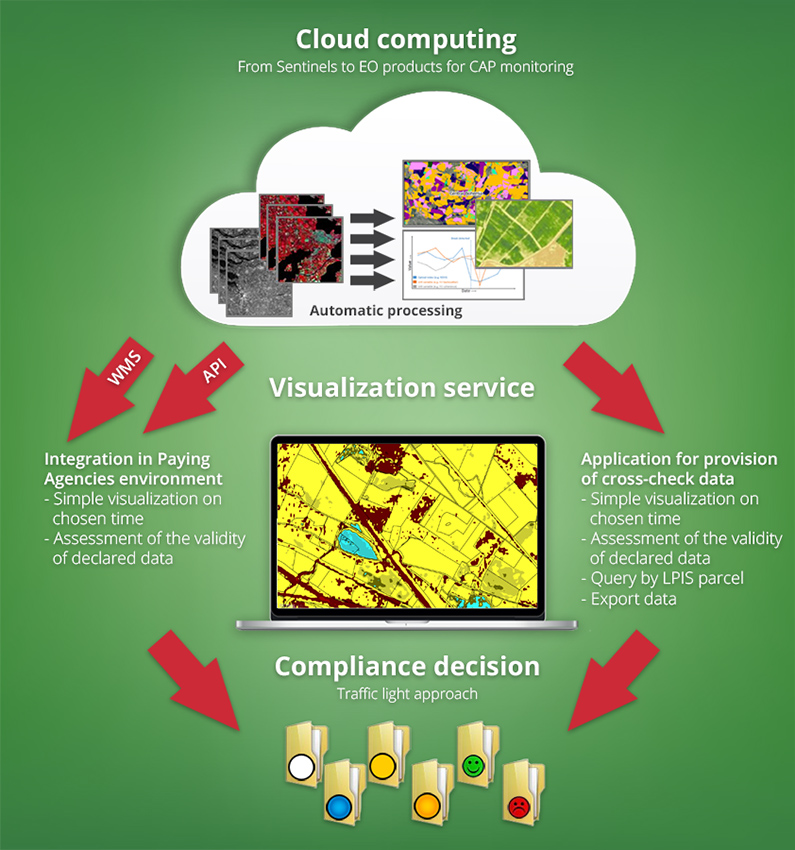Paying Agencies have to decide about the farmers’ compliance. Is the declaration compliant or not? What is the probability of non-compliance? Does the parcel management meet the requirements of particular subsidy scheme? Paying Agencies don’t need remote sensing products but tables or databases with agricultural practices information at the parcel-level, to be crosschecked with the farmer’s declaration to decide if the declaration is compliant or not, if we don’t know or if more information is needed. The “traffic light approach” is being currently discussed between the different actors of the CAP as a viable solution to provide this analysis.
In this context, Sentinel-based EO products are considered as the building blocks of the Sen4CAP workflow. Sentinel imagery will provide information in the form of continuous geospatial data, such as thematic maps, vegetation status, monitoring activities or other remote sensing products. These products will feed subsequent processing chains to create added-value information that will be able to contribute answering key questions of the PAs about compliance of the declared information (on parcel level) or subsidy application (on dossier level).

The project partners have selected all together a set of subsidy schemes to test following what is called a “use-case approach”. They consist of crop diversification, permanent grassland identification and comparison with national reference, EFA with identification of catch crops, nitrogen fixing crops and land lying fallow, land abandonment, LPIS update and claimless system.
EO products will be generated in the most automated way with the aim of being useful for most countries and for varying use cases. A second step will be needed to translate the geospatial information included in the EO products in the form of numerical tables that PAs could link with the Paying Agencies applications using standard database tools. This step will require detailed fine-tuning with each individual PA due to national specificities in CAP implementation.
The use case selection aimed at being a good balance between the current CAP management, based on the current legislation and on the administrative and on-the-spot checks performed by the PAs, and the need to anticipate what could be relevant and feasible for the new monitoring approach.
